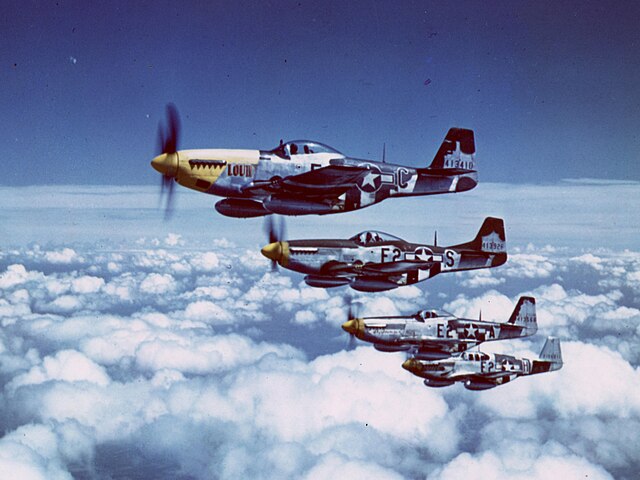Aerial supremacy is the degree to which a side in a conflict holds control of air power over opposing forces. There are levels of control of the air in aerial warfare. Control of the air is the aerial equivalent of command of the sea.
Box formation of B-17 bombers from 384th Bomb Group, 1 September 1944
A 2,000 lb. bomb "near-miss" severely damages Ostfriesland at the stern hull plates in the Project B demonstration of naval air power.
Royal Air Force Supermarine Spitfires before the Battle of Britain
361st Fighter Group P-51D Mustangs of the Eighth Air Force heading out on an air supremacy mission over Nazi Germany
Airpower or air power consists of the application of military aviation, military strategy and strategic theory to the realm of aerial warfare and close air support. Airpower began in the advent of powered flight early in the 20th century. Airpower represents a "complex operating environment that has been subjected to considerable debate". British doctrine defines airpower as "the ability to project power from the air and space to influence the behaviour of people or the course of events." The Australian Experience of Air Power defines Airpower as being composed of Control of the Air, Strike, Intelligence Surveillance and Reconnaissance, and Air Mobility roles.
The USAF's F-22 Raptor air superiority fighter
Numerous ROKAF's F-16 Fighting Falcon jet fighters on a runway






